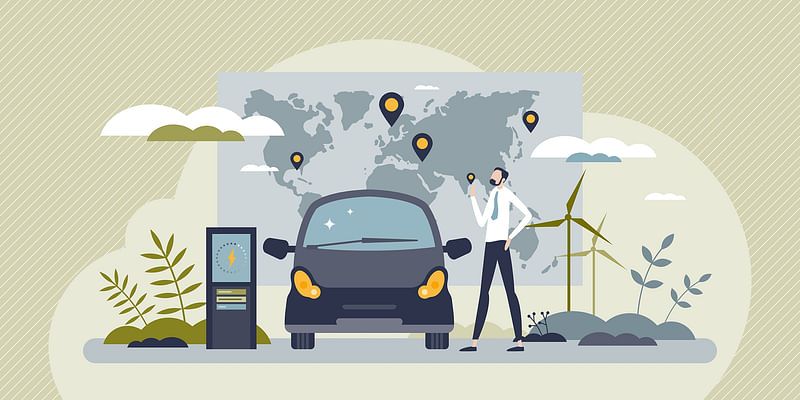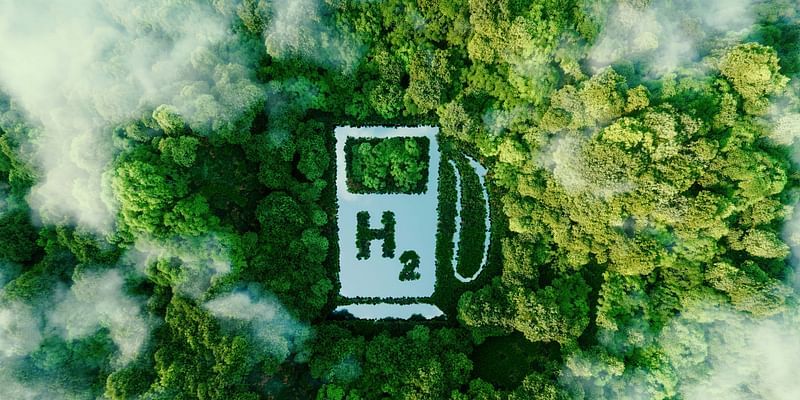
In the global quest to reduce carbon emissions and transition to sustainable energy sources, hydrogen has emerged as a robust contender in the alternative fuel industry. Nations worldwide are increasingly exploring hydrogen’s potential to decarbonise various sectors, from heavy manufacturing to energy-intensive industries like steel and cement production. Simultaneously, global automakers are investing heavily in hydrogen-powered vehicles, particularly Fuel Cell Electric Vehicles (FCEVs).
However, amid the growing enthusiasm for hydrogen, electric vehicles (EVs) maintain a prominent role in the sustainable mobility landscape. Here’s why:
Challenges for hydrogen vehicles include extensive infrastructure needs: new production facilities, high-pressure compression, and limited refuelling options, complicating adoption. When it comes to efficiency comparisons, EVs definitely excel as they use significantly less energy for similar distances. For instance, an electric city bus covers 100 kilometres with a mere 144 kilowatts of energy while a hydrogen-fuelled counterpart requires a substantial 714-watt hours. This remarkable five-fold difference underscores the inefficiency of hydrogen-fuelled vehicles when compared to EVs.
Adding to this is the growing consumer interest in EVs, which is driven by environmental concerns and cost savings. A study reveals that 59% of Indian consumers express concerns regarding climate change, pollution levels, and emissions from gasoline and diesel vehicles. These concerns drive the perception that EVs offer lower fuel costs, heightened environmental consciousness, and an overall improved driving experience. Impressively, a significant 70% of tier-one Indian car consumers are open to considering an electric car for their next vehicle.
Reflecting these promising trends, sales of new electric two and three-wheelers (E2Ws and E3Ws) are projected to witness substantial growth by 2030. E2Ws could experience growth rates of up to 50%, while E3Ws are expected to surge by as much as 70%. This exponential growth clearly shows the evolving landscape of sustainable mobility in India, positioning EVs as leaders in the race towards a greener future.
However, at the same time, we should also note that hydrogen fuel cell vehicles (FCVs) and battery electric vehicles (BEVs) are two distinct types of electric vehicles that use different technologies for generating and storing energy. Each approach has its advantages and challenges.

.thumbnailWrapper
width:6.62rem !important;
.alsoReadTitleImage
min-width: 81px !important;
min-height: 81px !important;
.alsoReadMainTitleText
font-size: 14px !important;
line-height: 20px !important;
.alsoReadHeadText
font-size: 24px !important;
line-height: 20px !important;

Fuel source
Hydrogen FCVs utilise hydrogen as fuel, which reacts with oxygen in a fuel cell to produce electricity that powers the vehicle’s electric motor. The only emission is water vapour. On the other hand, BEVs use rechargeable lithium-ion batteries to store electricity, which is used to power an electric motor, resulting in zero tailpipe emissions.
Energy efficiency
When it comes to energy efficiency, hydrogen FCVs may have a lower overall efficiency due to energy losses in producing, transporting, and converting hydrogen (approximately 62%) into electricity. In contrast, BEVs tend to be more energy-efficient, with lower energy losses during battery charging compared to the energy losses associated with hydrogen production and conversion.
Infrastructure
Infrastructure plays a pivotal role in the adoption of these technologies. Hydrogen refuelling infrastructure is less developed compared to electric charging networks, making it less convenient for users. Battery EVs, in contrast, benefit from a more widespread charging infrastructure with various charging options, including home charging, public charging stations, and fast chargers.
Range
Hydrogen FCVs have an advantage when it comes to range, often offering a longer driving range compared to many BEVs. This makes them more suitable for long-distance travel. However, BEVs are continually improving their range with advancements in battery technology, and this makes them sufficient for most daily commutes and urban driving.
Refuelling/charging time
Hydrogen FCVs offer quick refuelling, taking only a few minutes, akin to refuelling a gasoline car. The charging time for battery EVs varies based on the charging speed and battery capacity. Fast charging can provide a significant charge in a shorter time while standard charging may take several hours.
.thumbnailWrapper
width:6.62rem !important;
.alsoReadTitleImage
min-width: 81px !important;
min-height: 81px !important;
.alsoReadMainTitleText
font-size: 14px !important;
line-height: 20px !important;
.alsoReadHeadText
font-size: 24px !important;
line-height: 20px !important;

Environmental impact
The environmental impact of hydrogen FCVs depends on the source of hydrogen production. If produced from renewable sources, they can have low emissions. Battery EVs, however, have zero tailpipe emissions and are considered environmentally friendly, especially when charged using renewable energy sources.
Cost
Hydrogen fuel is generally more expensive than electricity, and the process of producing, transporting, and storing hydrogen can contribute to higher costs. In contrast, battery EVs tend to have lower operating costs due to the lower cost of electricity and fewer maintenance requirements compared to internal combustion engine vehicles.
The road ahead
While hydrogen may be touted as a fuel of the future, the challenges tied to infrastructure development, energy efficiency, and competition from rapidly evolving electric vehicles cannot be underestimated. In both the trucking industry and broader mobility solutions, EVs currently dominate in terms of cost-effectiveness, efficiency, and practicality. While hydrogen may find its niche in specific transport applications, for now, EVs remain the more relevant and promising choice in our journey towards a cleaner, sustainable future.
India’s vision for electric mobility is to attain 30% EV penetration for passenger cars, 70% for commercial vehicles, and 80% for two and three-wheelers by 2030. This vision aligns seamlessly with the Economic Survey 2023’s prediction, anticipating a Compound Annual Growth Rate (CAGR) of 49% between 2022 and 2030, with an estimated 10 million annual EV sales by 2030.
Union Budget 2023 further solidified this commitment. It allocated a substantial budget of Rs 35,000 crore for critical capital investments, all aimed at facilitating the energy transition and achieving net-zero targets by 2070. As the market matures, battery electric vehicle (BEV) technology is poised to be the preferred choice in a value-conscious market like India.
(Rohan Shravan is the founding CEO/CTO of Tresa Motors, an OEM manufacturer of medium and heavy electric trucks.)
Edited by Kanishk Singh
(Disclaimer: The views and opinions expressed in this article are those of the author and do not necessarily reflect the views of YourStory.)










![Read more about the article [Funding alert] Insurtech startup RenewBuy raises additional $10M to close $55M Series C round](https://blog.digitalsevaa.com/wp-content/uploads/2021/08/Imageopwm-1611036451768-1628146332444-300x150.jpg)